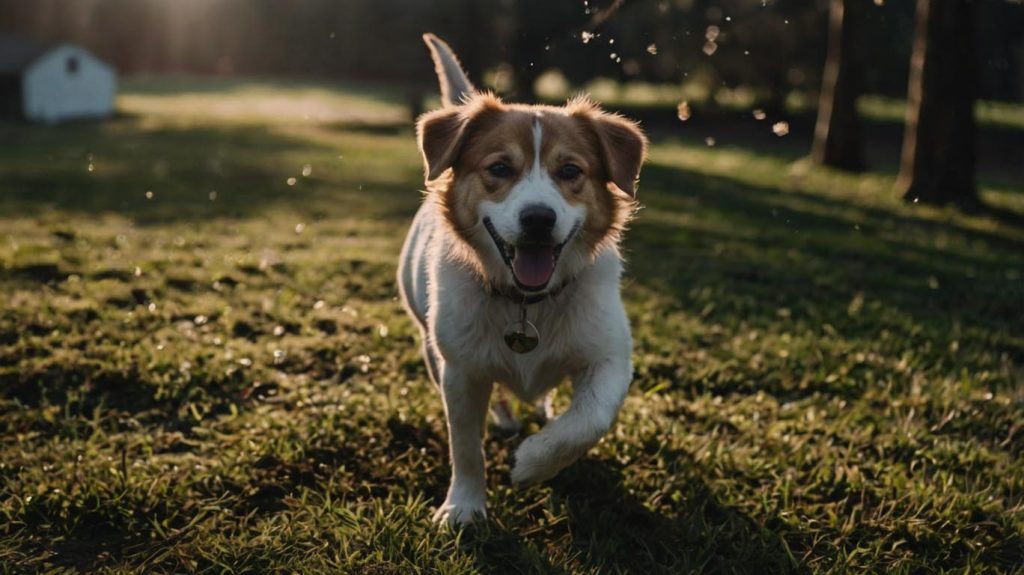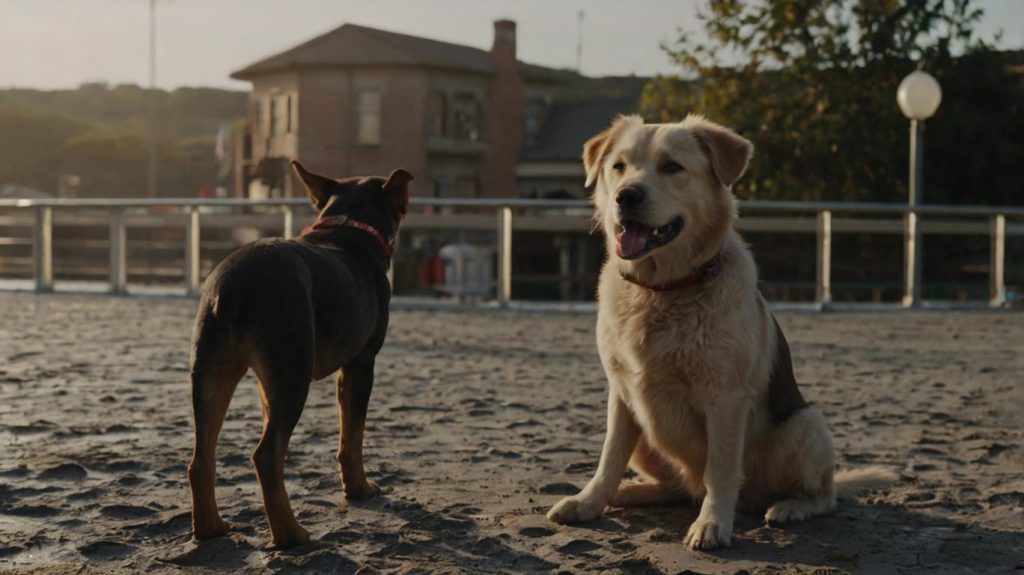Dog Socialization
Dog socialization is more than a trending term in the pet community—it’s a foundational process that shapes a dog’s behavior for life. Whether you’ve just adopted a tiny pup or an older shelter dog, proper socialization can make the difference between an anxious, unpredictable pet and a calm, confident companion.
From the first wag of the tail to everyday interactions at the park, dog socialization is about helping your canine companion feel comfortable and secure in various environments. And guess what? When done right, it’s not only effective but fun for both you and your dog.
Let’s walk through every step, ensuring you get the best out of your furry friend.
Understanding Dog Socialization
To put it simply, dog socialization is the process of gradually exposing your dog to different people, places, smells, sounds, and other animals. By doing so in a positive, structured way, your dog learns that the world is a safe place.
Imagine being plopped into a foreign country without knowing the language, customs, or people. Overwhelming, right? That’s how unsocialized dogs feel in new situations. Therefore, easing them into these experiences is vital.
Additionally, well-socialized dogs show fewer signs of aggression, fear, or anxiety. In contrast, dogs without exposure may become reactive, defensive, or even withdrawn. Hence, socialization is key to long-term behavioral health.

Why Dog Socialization is Crucial
Socialized dogs are easier to train, enjoy better relationships with people and pets, and handle stress far better. Here’s why:
- Reduces fear-based aggression
- Improves adaptability to new environments
- Strengthens the human-dog bond
- Enhances obedience and confidence
- Makes vet visits and grooming less stressful
Furthermore, dogs that are properly socialized are less likely to develop behavioral issues down the line. They become joyful, curious beings rather than stressed-out bundles of nerves.
When to Start Dog Socialization
The prime socialization window is between 3 to 14 weeks of age, but don’t worry—older dogs can still learn. Puppies are like little sponges at this age, eager and ready to soak in the world around them.
However, even adult dogs benefit from gradual and consistent socialization. It’s never too late.
How to Begin Dog Socialization
Start small and build up. Your goal is to introduce new experiences in a controlled and positive way. Here’s how:
- Begin at home, where your dog feels safest.
- Introduce family members and friends gradually.
- Use treats to reward calm behavior.
- Go for short walks in quiet areas, then slowly move to busier spots.
Remember: Patience is powerful. If your dog appears stressed, take a step back and try again later.
Dog Socialization for Puppies
Puppies are adorable—but without socialization, they can grow into fearful adults. Focus on:
- Meeting different types of people (kids, adults, seniors)
- Walking on varied surfaces (grass, gravel, tile)
- Hearing household and city sounds (vacuum, traffic, sirens)
Additionally, puppy classes can be golden opportunities for structured, safe interaction.
Dog Socialization for Adult Dogs
Older dogs often carry baggage—fear, trauma, or just unfamiliarity. Here’s how to help:
- Keep sessions short and frequent.
- Pair new experiences with rewards.
- Never force an interaction—let them take the lead.
Over time, trust grows. And with it, confidence.
Common Dog Socialization Mistakes
Even with the best intentions, missteps happen. Avoid these:
- Rushing the process
- Overwhelming your dog with too much at once
- Ignoring stress signals (tucked tail, yawning, lip licking)
- Using punishment instead of redirection
Instead, create positive associations with each experience.

Dog Socialization with Other Dogs
Peer play is powerful, but not all dogs are instant friends. Use these tips:
- Start with one calm, well-socialized dog
- Use neutral ground (not your home turf)
- Supervise play and look for balanced interactions
Over time, your dog learns the language of play.
Dog Socialization with Humans
Meeting new humans? Treats, praise, and patience go a long way. Start with:
- Calm greetings—no sudden moves or loud voices
- Letting the dog approach first
- Teaching polite behaviors (like sitting for attention)
This builds trust and reduces fear of strangers.
Using Play for Dog Socialization
Dogs learn through play. Interactive games like tug-of-war or fetch teach boundaries, patience, and cooperation. Bonus: it strengthens your bond too!
Dog Parks and Socialization
Dog parks are both blessing and curse. When used wisely:
Pros:
- Great energy outlet
- Exposure to different dogs
Cons:
- Unpredictable dogs
- Overstimulation
Supervise closely and choose off-peak hours for calm introductions.
Group Classes for Dog Socialization
Professional trainers offer structured environments for social learning. Plus, you gain skills too!
Look for trainers who use positive reinforcement methods and small class sizes.
In-Home Dog Socialization
Not all socializing needs to happen outdoors. Invite visitors, introduce new smells and textures, or bring in different pets—slowly and with care.
Introducing Your Dog to Children
Kids can be overwhelming for dogs. Teach kids to:
- Approach slowly
- Avoid hugs or rough play
- Give space when the dog retreats
And always supervise interactions.
Dog Socialization for Reactive Dogs
Reactivity isn’t the end. Use desensitization techniques, reward calmness, and consider a professional behaviorist for extra help.
Crate Training and Socialization
A crate isn’t a cage—it’s a safe zone. When used correctly, it aids in building independence and trust.
Traveling and Dog Socialization
Take short car rides. Visit pet-friendly stores. Let them explore at their pace. The more places they see, the more adaptable they become.
Using Treats and Positive Reinforcement
Always carry high-value treats. Praise every success. Make good behavior irresistible to repeat.
Tools That Help Dog Socialization
Helpful tools include:
- Front-clip harnesses
- Calming vests
- Puzzle toys for mental stimulation
- Long leashes for controlled freedom
Story of a Dog’s Socialization Journey
Meet Max. A shy rescue pup who barked at everything. With patience, treats, and love, Max now struts down the street like a prince. It took months—but it worked.
Veterinarian’s Role in Socialization
Your vet offers more than shots. They can screen for anxiety, recommend trainers, and help with fear-based behavior.
Building Confidence Through Socialization
Confidence isn’t born—it’s built. Each new experience, when handled positively, becomes a brick in the foundation of a well-adjusted dog.
Dog Socialization and Mental Health
Mental stimulation equals better behavior. Boredom breeds destruction. Keep your dog mentally fit by socializing regularly.
Signs of Successful Dog Socialization
- Calm posture in new places
- Friendly greetings
- Quick recovery from surprises
- Eagerness to explore
Challenges in Dog Socialization
Some dogs face health limits, trauma, or genetics. That’s okay. Go slow. Work with a trainer. Progress is progress—no matter how small.
Consistency is Key in Dog Socialization
Like any skill, socialization needs repetition. A walk today won’t undo months of fear. Stick with it.
Benefits of Dog Socialization for Owners
Less stress, fewer surprises, and a happier dog? Yes, please! Socialized dogs are simply easier to live with.
Top Dog Socialization Myths Busted
- “Old dogs can’t learn new tricks” – False!
- “Dogs socialize themselves” – Nope.
- “One bad experience is fine” – It can scar them.
Know better. Do better.
Conclusion and Final Thoughts
Dog socialization is a gift—for your pet and for you. It requires time, patience, and heart. But the rewards? Endless.
Take the first step today. Start small, stay consistent, and enjoy the journey. Your dog deserves it.
FAQs
What is dog socialization?
Dog socialization is the process of helping dogs become comfortable with new experiences, people, animals, and environments.
When should I start socializing my puppy?
The best time to start is between 3 to 14 weeks, but it’s never too late to begin.
How do I know if my dog is well socialized?
Look for signs like calm body language, friendliness, and resilience in new situations.
Can adult dogs be socialized successfully?
Absolutely! With patience and positive reinforcement, adult dogs can learn to enjoy new experiences.
Are dog parks good for socialization?
Yes, but only if your dog is ready. Always supervise and introduce them slowly.
What should I avoid when socializing my dog?
Avoid overwhelming them, forcing interactions, and ignoring signs of stress.

